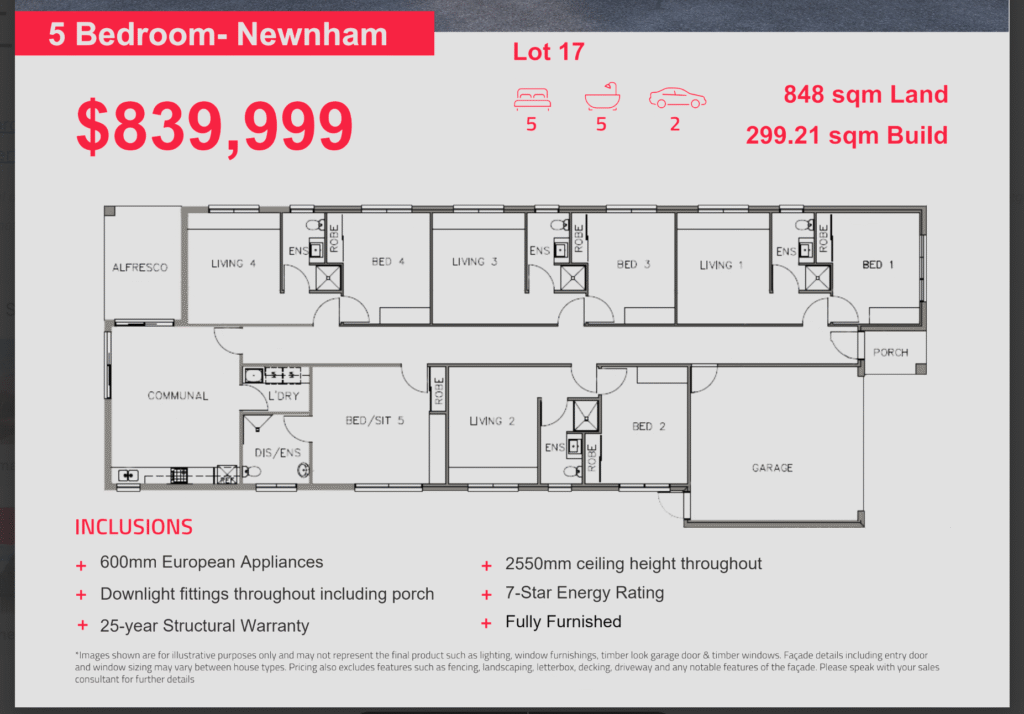The Future of Urban Renting: Co-Living Investments
Tap into the growing demand for flexible, community-focused housing and generate exceptional rental returns.
Co-Living Property Floor Plan Example

What is a Co-Living Property?
A Co-Living property is a modern form of housing designed for multiple individual tenants. It features several private bedrooms, each often with its own ensuite bathroom, alongside large, high-quality communal living spaces like a shared kitchen, living room, and outdoor areas. Instead of renting the whole house to one family, you rent it out room-by-room, often on individual leases.
Who is this Strategy Best For?
- Maximum Cash Flow Investors: Co-Living is designed to generate the highest possible rental yield from a single residential property.
- Investors in Urban & University Hubs: This model thrives in areas with a high population of students, young professionals, and single occupants.
- Hands-On or System-Driven Landlords: This strategy requires a more active management approach to handle multiple tenancies.
The Trade-Offs: An Unbiased Analysis
The Advantages
- Exceptional Rental Yield: Renting by the room can generate significantly more income than a traditional single-lease property.
- High Demand in Key Demographics: Perfectly meets the needs of the growing single-person household market.
- Resilient to Vacancy: If one room is empty, you still have income from the others.
The Considerations
- Intensive Management: Managing multiple tenants, leases, and shared spaces requires more time and effort, or the cost of a specialist property manager.
- Higher Tenant Turnover: Leases are often shorter, leading to more frequent re-leasing activities.
- Financing Can Be More Complex: Some lenders may have different criteria for this type of investment property.
